- Home
- Dick Francis
Lester: The Official Biography Page 10
Lester: The Official Biography Read online
Page 10
Mark's church, North Audley Street.
Susan wore a flowered silk dress with a hat made of petals, Lester wore a navy blue pin-striped suit: they looked apprehensively happy. The reception was held at Brown's Hotel, where Susan's parents had held theirs also, and the new couple went away to the south of France for two weeks afterwards.
Returning, they moved into the house they had bought in The Avenue, Newmarket, and named it Florizel, after a horse trained by Keith Piggot that Susan had ridden a year or two earlier in the Newmarket Town Plate. In that event, she had been beaten by Julie Murless (Noel Murless's daughter, later wife of Henry Cecil) but had been fond enough of the horse to choose its name for her first married home.
Domesticity sat oddly on the young Piggotts. Susan learned to cook chicken, which they ate most of the time. Lester mowed the lawn. Susan says that at least her ignorance in the kitchen had one excellent result: Lester never had quite so much trouble with his weight after he'd married her.
Susan came from a family where everything was geared to the needs of her father.
Sam's training operation was the most important element: Maureen organised the whole of life around it. Susan and her brother Robert, four years younger, were accustomed to giving their father's needs absolute priority without question. Lester came from a family which put his needs first, which organised life around his comings and goings, which fed him at times which suited him and provided a comprehensive support system with undemanding devotion.
When they left these backgrounds and came together, the young pair simply continued in their accustomed life roles. Susan smoothed the way for Lester instead of for her father; Lester moved from his mother's solicitude to his wife's.
It was a dove-tailing pattern and a foundation which weathered the strains and storms inevitable in every marriage, which carried them through in fundamental accord to a silver wedding day and beyond, and which shows no sign of cracking. This is not to say there is never nowadays a cross word. With a life lived at the pace and stress of the Piggott's, it would be unnatural if there weren't sometimes a frustrated edge to the voices. The constantly-ringing telephone, interrupting every conversation, is picked up often with gritted teeth. They each, however, come from long-lasting families, and one of the strengths of such families is that they pass on the expectation of stability to the next generation.
Neither Lester nor Susan ever rebelled against their parents. Susan sought advice often from her mother and deeply admired her father. Lester in later years built a bungalow for Keith and Iris a few steps from his own house. With family affiliations so strong on each side, the habit of affection between Lester and Susan became the solid rock of the Piggott marriage, trustable by tradition under their feet.
In the June after the wedding, Lester won the Derby for the third time and later in the year Susan became pregnant. Their first daughter, named Maureen after Susan's mother, was born in May 1961, during the week of Chester races.
Lester was in Chester, of course. He returned to his newly extended family in a happy state of semi-intoxication, having celebrated the arrival not just with his fellow jockeys but also with most of the visiting Australian cricket team, notably Keith Miller, a favourite friend.
Soon after the birth, Susan went back to riding her father's racehorses out at morning exercise, a part of her life she had missed, and later that year, and again in 1963, she won the Newmarket Town Plate.
In 1965, Susan gave birth to their second daughter, Tracy, completing the family; and a few years later, her old habit of managerial hard work resurfacing after a long period of domesticity, she began to operate as a bloodstock agent. Slowly, cautiously at first, but over the years with increasing skill and confidence, she turned her deep knowledge of horses into a tangible asset, developing a sizeable and respected business.
Both Lester and Susan believed always in keeping their children with them and in showing them the world, and consequently from a very young age the two girls travelled several times to the Bahamas, South America and the Caribbean, and towards the end of their schooldays to Singapore, Malaysia, Hong Kong and throughout Europe. At every destination, Lester made excursions to nearby courses to ride winners, mildly continuing the tradition that work comes first with pleasure as its consequence.
The whole family became expert travellers, not least because they all positively enjoy it. There is probably no one on earth faster through an airport than Lester, who seems to carry the floor plans of dozens of them in his head.
On one occasion, his speed got him into trouble. He and Susan (without the girls) were travelling from Hong Kong to Singapore where he was due to ride in one of the island's most important races, the Lion City Cup. He had won the race the year before, and many were hoping that on Blue Star he would do it again.
The Piggotts had to change planes en route at Bangkok, and there, instead of flying straight on, they were delayed for a whole night. Flying on the next morning, they touched down at Singapore at about the time Lester should have been changing into his colours out at the racecourse.
"Get the bags," Lester said succinctly to Susan, sprinting first off the aeroplane and finding an escalator leading upwards through an apparent side door. Susan went through the health check desk and through the immigration with wide-eyed stunned officials saying, "Did you see that man? He didn't go through the health desk, he didn't go through immigration, he didn't go through customs!"
"Dear me," Susan said. "How extraordinary," and didn't say she knew him.
Lester ran right through the airport buildings and caught a taxi. Susan composedly collected the suitcases as instructed, was met as arranged by friends, booked in at the hotel and finally arrived on the racecourse.
The Lion City Cup was over. Lester had won. The appreciative crowd was counting its winnings.
Retribution appeared later in the afternoon in the shape of three forbidding young immigration officials who threatened deportation, but fortunately by the next morning a few words had been quietly dropped in high places, mainly to the effect that Lester had had an obligation to fulfil and it wasn't his fault he'd been delayed; and the champion overland traveller got off with a caution.
Ask Maureen and Tracy if their father was strict with them as children, and they laugh, the idea is so alien. Lester undemandingly loves his daughters, is proud of them, anxious for them sometimes, hoping they'll be happy. They have grown up with the pleasant sort of beauty that any father would delight in, with sweet natures speaking volumes for their source of upbringing.
To be the child of a household name has destroyed many, but Lester and Susan's down-toearth manner and simple tastes cooled the greenhouse of success like air conditioning. In their house, there was Lester the living Dad, not Lester the living legend.
For Maureen it was never a problem to have a famous father: she accepted it from birth as part of life. For Tracy perhaps it wasn't quite as simple, and for a while during her teens she preferred, when among strangers, for them not to find out who she was. Both of the girls naturally learned to ride, but were never forced. Maureen in her teens took to eventing, and Tracy rides exercise on racehorses. Neither has shown any desire to be a professional jockey. Both are supportive, proud and protective of their father.
After fifteen years, Lester and Susan left their first house and built a new one on the opposite side of Newmarket, where there was room also to build stables. Influenced by a house they had seen in Hollywood, and another in Australia, they designed a one-storey U-shaped house round a swimming pool, and with them from one home to the other they took both their telephone number and the name Florizel.
From the road, shielded by bushes along a curving drive, the low house is easy to overlook. Inside, it is spacious without trying to be grand, comfortable without opulence, built purposefully for a busy life, with "his" and "hers" offices.
Lester's workplace at home in summer consists mainly of a garden chair in an airy sunroom beside a telephone with office clo
thes consisting of swimming shorts and a cigar.
A man's house, family, habits of life are always a reflection of his essence. There is no pretension in Lester's.
-
10 St. Paddy
THE colt developing as a two-year-old in 1959 in Noel Murless's stable sent a ripple of anticipation through an establishment that was already enjoying a brilliant year.
There was not only Petite Etoile's unbroken run of six wins including the One Thousand Guineas and the Oaks, but also the multiple winners Primera and the Queen's Pindari, who took the Ebor and the Voltigeur in a magnificent double at York on the same afternoon. Noel Murless's prize-winnings soared ahead of Cecil Boyd Rochfort's, and Lester finished the 1959 season with 142 winners, a great improvement on 1958's 83 from much the same number of rides.
Underlying all was the promise of St. Paddy. St. Paddy was by Aureole, a great sire of many winners who nevertheless frequently passed on his volatile and unreliable temperament. No one therefore was much surprised when St. Paddy proved to be highly strung and easily frightened: the problem was basically to release his speed while staying in control.
Lester rode him often at exercise on the Heath. "He bolted a few times. A bird would fly up, and he'd be off and go two or three furlongs before I could stop him."
Trusting to no birds flying up from the track itself, Noel Murless sent his hard-pulling twoyear-old to York in August for his first public outing on the day Petite Etoile won the Yorkshire Oaks, and such was St. Paddy's reputation for speed at home that he was backed down to favourite.
The worst happened. St. Paddy came out of the paddock gate onto the course and straightaway bolted. He went three furlongs flat out before Lester could pull him up, throwing away all chance of winning the race. Lester took him to the start and set off, but there was no use pressing the colt hard, so he tucked him in behind to teach him how to settle, and they finished in the ruck, about ninth of eighteen.
After that debacle, jockey and trainer decided to try a crossed noseband next time out-a sort of bridle which gives much stronger control of a horse's head. Noel Murless sent St. Paddy to Ascot for the 1-mile Royal Lodge Stakes in late September, and Lester took him down early to the start, trotting sedately. Let off, St.
Paddy immediately ate up the ground with his fearsome speed, and won by five lengths. Derby-prospect watchers sat up and took notice, and Noel Murless sighed with relief.
During the winter, the trainer mapped out his plan of campaign, deciding that St.
Paddy should take his chance in the Two Thousand Guineas but that, unlike Crepello, he could not be trained to the minute to win. St. Paddy was a stuffily-breathing horse who needed a very great deal of work, and more preparation than the scant six weeks between the beginning of the Flat season and the first two classics allowed.
Considering that he really needed a longer distance and hadn't been trained very hard, St. Paddy ran well in the 1-mile Two Thousand Guineas to finish sixth. Noel Murless, not expecting a win, knew contentedly that the colt would improve on this Newmarket performance, and two weeks later ran him in the Dante Stakes at York, which St Paddy obligingly won easily.
Before both of those races, Lester had ridden the good-looking dark bay down to the start in a crossed noseband which he had taken off at the post: the crossed noseband was thought too severe for racing in because, once the tapes had gone up, the horse had to be free to stretch his head forward and develop his rocket speed unhindered.
Approaching the Derby, Lester's chief fear was that when the horses turned to canter back past the stands at the end of the parade, St. Paddy would blast off at a hundred miles an hour, and to avoid that he used a dropped noseband with hooks at the side.
"You can hold anything in that."
St. Paddy went in subdued fashion to the start, and the restraints were there removed.
Perhaps because of his easily frightened nature and his comparative unreadiness in the Two Thousand Guineas, he started at 7-1, by no means favourite. The opposition included two Irish colts, Kythnos and Alcaeus, and the French runner, Angers, the best backed.
The race itself proved to be without complication for Lester. He took St. Paddy into the front bunch at the start and simply stayed there, always going easily in third or fourth place. With coolness and great timing, he urged St. Paddy to the front two furlongs out and let the colt stride away freely keeping him ahead without problem, riding him with hands and heels only.
The two Irish colts came second and third, the faster finishing Alcaeus passing the more fancied Kythnos a short distance from the post. The French hope, Angers, cast gloom over the Epsom Downs by breaking a hind leg before reaching Tattenham Corner and having to be destroyed, a sad end to a great horse.
It was a fast Derby, only a shade outside Crepello's time: the fourth victory for Sir Victor Sassoon, the second for Noel Murless, the third of course for Lester. After these giddy heights,, St. Paddy went back to Newmarket for a well-earned rest, his next rest not to be until Goodwood at the end of July. Again, as for the Guineas, he could not be trained back to his absolute peak in time for Goodwood, and was beaten there in the 1-mile 3-furlong Gordon Stakes by Kipling.
Lester's opinion of St. Paddy as a whole is that the colt was a speed machine but unintelligent. Of riding him, he says, "He was a great horse when he was running away in a race, when he was pulling against his bit.
If he wasn't pulling, he wouldn't race. If you had to let him off the bit, he'd get frightened and it was the end, he wouldn't win. It was better to hold the reins tight, to keep him pulling, even if you knew he wasn't going to go any faster. It gave him a bit of courage."
Lester's victories on St. Paddy looked inevitable from the stands and his losses sometimes inexplicable: the key to both lay in the quirks of the nervous equine mind, and the complete understanding of them in the thoughtful mind of his jockey.
After Goodwood, St. Paddy went to York fully prepared for the Great Voltigeur, and won easily. Ahead then lay the St. Leger, the one classic neither Lester nor Sir Victor had won so far.
The field opposing St. Paddy at Doncaster lacked much glitter and, in the event, on perfect going, the colt ran the easiest race of his life. He won by three lengths, unstretched, pulling so hard against his bit that the Press dubbed it "runaway St.
Leger", and "just too simple". Lester kept his council, and everyone in the Murless camp was naturally ecstatic, particularly the owner, who had bred the horse himself.
Sir Victor Sassoon was not in good health and came to the St. Leger in a wheel-chair, frail but smiling broadly: with other winners such as Sunny Way, Tudor Love and Off Key, he finished the season overwhelmingly as the leading owner. Noel Murless similarly topped the trainers' list, and the great Aureole commandingly led the sires. St. Paddy the schizophrenic warily ate his hay and continued to be frightened by birds.
Lester, his St. Paddy season augmented by the four-year-old successes of Petite Etoile and by a stream of further Murless winners, was also sup ported by a whole host of other trainers hungry for his talents. Disappointing few of them he rode with constant inspiration and mastery, his very presence on a horse abruptly shortening its odds; and despite not being able to ride half the horses running because of his weight, he won 170 races from 640 rides and became champion jockey for the first time.
Marriage, the Derby, the championship, all in one year. The Gods were smiling.
What could possibly go wrong?
In the next season, 1961, Pinturischio went wrong. Pinturischio was the equivalent of Crepello and St. Paddy, a colt with everything it took to win the Derby. Owned like the others by Sir Victor Sassoon, and coming to hand early, he won a mile race at Newmarket in April 1961, starting at a justified 5-2 on.
Secrets are impossible on Newmarket Heath. The work-watchers with their powerful binoculars, the bookmakers' runners, the inquisitive Press, all had seen for themselves the developing power of the potential world beater, and large bets were already be
ing struck on his winning the Derby in June.
Sired by Sir Victor Sassoon's Derby winner Pinza, Pinturischio started favourite in the Two Thousand Guineas, and although he didn't win, he did enough in finishing a good fourth to keep expectations high. Owner, trainer and jockey looked forward to another Derby success. The public confidently piled on the ante-post bets.
Others were less pleased at the prospects. Three weeks before the Derby, someone broke into the Murless stable and gave Pinturischio a massive dose of a diarrhoea-producing drug. The colt, in a sorry state, nevertheless recovered in time for Noel Murless to resume his Derby preparation, and it was thought that the nobbling attempt had failed. Everyone underestimated the villains' determination. Despite increased security, the stables were again penetrated, another and stronger dose of physic being administered to Pinturischio.
This time, the colt was desperately ill. Not only had he no chance of running in the Derby, he never properly recovered at all, and was unable ever to race again. This wicked destruction of a great animal cast a cloud over the whole racing year for those concerned.

 Bolt
Bolt Proof
Proof Straight
Straight To the Hilt
To the Hilt High Stakes
High Stakes Come to Grief
Come to Grief Odds Against
Odds Against Knock Down
Knock Down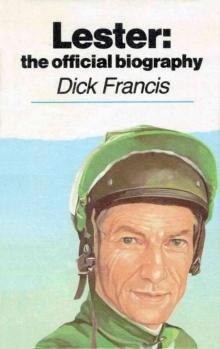 Lester: The Official Biography
Lester: The Official Biography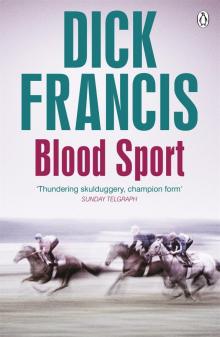 Blood Sport
Blood Sport Trial Run
Trial Run Comeback
Comeback Second Wind
Second Wind The Danger
The Danger Under Orders sh-4
Under Orders sh-4 Break In
Break In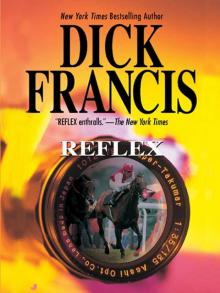 Reflex
Reflex Dead Heat
Dead Heat Dick Francis's Damage
Dick Francis's Damage The Edge
The Edge Wild Horses
Wild Horses Longshot
Longshot Slay Ride
Slay Ride Shattered
Shattered Banker
Banker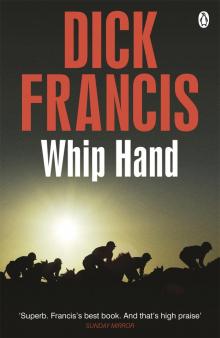 Whip Hand
Whip Hand Even Money
Even Money Driving Force
Driving Force Decider
Decider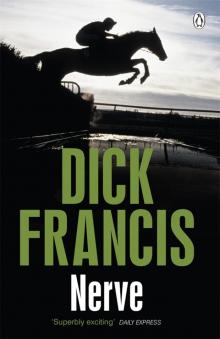 Nerve
Nerve Hot Money
Hot Money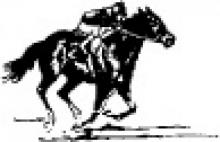 Field of Thirteen
Field of Thirteen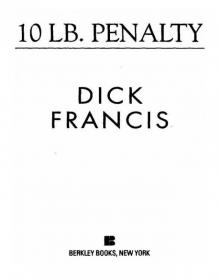 10 lb Penalty
10 lb Penalty Dead Cert
Dead Cert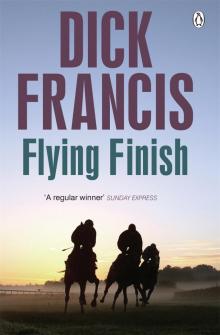 Flying Finish
Flying Finish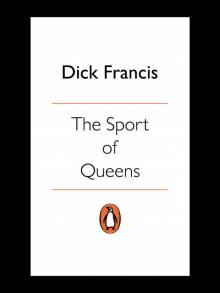 The Sport of Queens
The Sport of Queens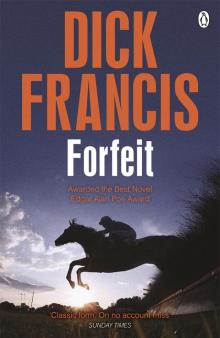 Forfeit
Forfeit Smokescreen
Smokescreen Twice Shy
Twice Shy Silks
Silks Enquiry
Enquiry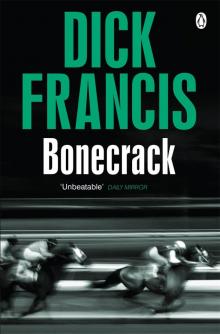 Bonecrack
Bonecrack For Kicks
For Kicks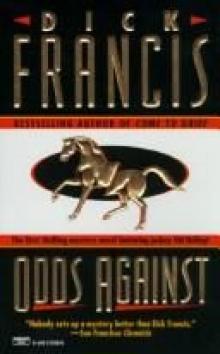 Odds against sh-1
Odds against sh-1 Rat Race
Rat Race Crossfire
Crossfire